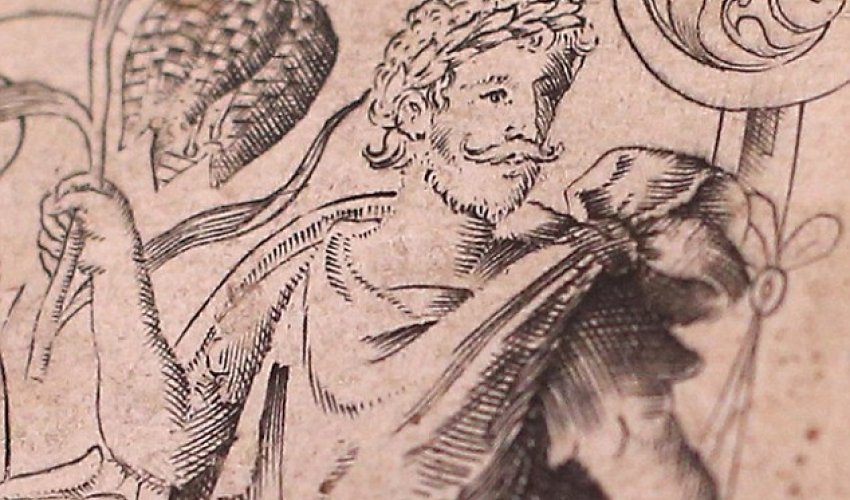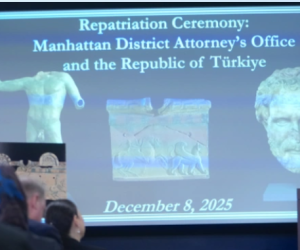Is this what Shakespeare REALLY looked like?

With his full beard and laurel-wreathed curly hair, the image looks more like Greek philosopher than a Tudor-age Briton.
But this picture - discovered in a 16th-century book on plants - is said to be the only surviving portrait of William Shakespeare made during his lifetime.
The image was identified by botanist and historian Mark Griffiths in the first edition of a 16th century book The Herball.
It had been believed that the figures in the engraving - said to show the poet and playwright holding a fritillary and ear of sweetcorn - were imaginary.
But a Latin cipher beneath the playwright has now been decoded as saying William Shakespeare.
Mark Hedges, editor of Country Life magazine, which is revealing the claimed discovery, said: 'This is the only known verifiable portrait of the world's greatest writer in his lifetime.
'It's an absolutely extraordinary discovery. Until today no-one knew what he looked like in his lifetime.'
Other famous images of the playwright - such as those in the First Folio of his collected works or on his monument at Holy Trinity Church in Stratford-upon-Avon - are believed to have been made after his death.
Written by pioneering botanist John Gerard and filling 1,484 pages, The Herball was the largest single volume work on plants published in English.
The engraving is the work of William Rogers and only around 10 to 15 copies of the book containing the image are thought to exist.
Mr Griffiths, who was working on a biography of Mr Gerard when he 'cracked the many-layered Tudor code' to apparently reveal the figures, said: 'At first, I found it hard to believe that anyone so famous, so universally sought, could have hidden in plain sight for so long.'
Edward Wilson, Emeritus Fellow of Worcester College, Oxford, expert in medieval literature, was initially sceptical.
But he said: 'This is the most important contribution to be made to our knowledge of Shakespeare in generations.'
The other three figures in the image are believed to be the author Gerard, Rembert Dodoens, a renowned Flemish botanist, and Queen Elizabeth's Lord Treasurer, Lord Burghley.
Mr Hedges said the decoding amounted to the 'literary discovery of the century' and would transform people's understanding of the Bard, who appears in a Roman outfit.
The code includes a fritillary and sweetcorn, which is said to point to Shakespeare's earliest poem and play in print Venus and Adonis, published in 1593, and Titus Andronicus in 1594. The laurel wreath is said to be a reference to Apollo and the Classical poets he inspired - chiefly, Virgil and Ovid.
The announcement was made at The Rose theatre in London, where Shakespeare performed.
But Professor Michael Dobson, director of the Shakespeare Institute at the University of Birmingham, poured scorn on the theory.
Professor Dobson said: 'I'm deeply unconvinced. I haven't seen the detailed arguments but Country Life is certainly not the first publication to make this sort of claim,' he said.
'One has seen so many claims on Shakespeare based on somebody claiming to crack a code. And nobody else has apparently been able to decipher this for 400 years.
'And there's no evidence that anybody thought that this was Shakespeare at the time.'
He added: 'I can't imagine any reason why Shakespeare would be in a botany textbook. It's a lovely picture. Everybody is very fond of it. But that doesn't mean that he had anything to do with it apart from the fact that he read it.
'It's a man in a toga, holding a little bit of a corn on the cob in one hand and a fritillary in the other.
'He (Mr Griffiths) hasn't been talking to anybody I know of in Shakespeare studies.
'They would have been better taking it to a Shakespeare expert than a botanist. I don't think very many people are going to take this seriously. I'm not sure Country Life's reputation will recover.'
(dailymail.co.uk)
www.ann.az




































 Photo
Photo 



 Video
Video 

